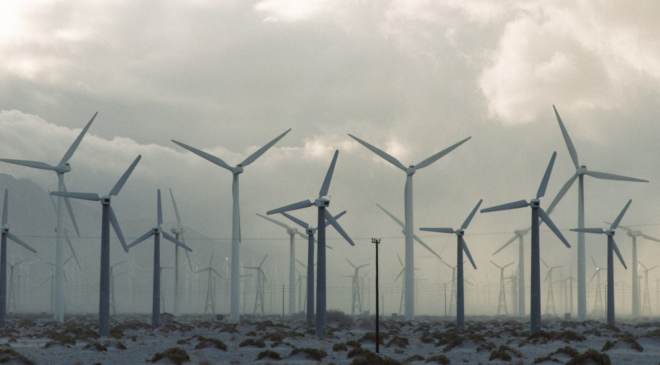
Enhancing the cost efficiency of wind farms can be achieved by slowing down the speed of clustered wind turbines, leading to increased durability and reduced noise pollution. A study conducted by a team of researchers from the University of Adelaide, led by Dr. Rey Chin, explored the operational conditions of wind turbines, their performance, and interactivity within wind farms.
Related: the top wind farms of the Middle East
“We have discovered that optimizing the rotational speed of the leading turbines in wind farms can enhance efficiency by ensuring all turbines spin at the same speed,” explained Dr. Chin, Senior Lecturer at the University of Adelaide.
“By reducing the rotational speed of the front turbines, the turbines behind can operate more effectively, mitigating the wake effect and improving overall performance.

Al Marmoom Wind Farm
“While this may slightly impact total energy generation, the benefits such as reduced noise pollution outweigh the minor reduction in energy output,” Dr. Chin added.
Currently, there are 110 wind farms in operation across various Australian regions, with 31 wind farms consisting of 599 turbines aged over 15 years. The typical lifespan of a wind farm ranges from 20 to 30 years.
Each wind turbine costs around AUD $7 million to build and approximately half a million dollars for decommissioning.
“The adjustment of rotational speeds can significantly enhance turbine longevity and cost efficiency,” Dr. Chin noted. “By optimizing turbine performance and simplifying design processes, substantial cost savings can be achieved.”
The findings of the research were published in the Journal of Wind Engineering and Industrial Aerodynamics.
“Noise pollution remains a primary concern with wind farms and reducing turbine speeds can make this form of renewable energy more socially acceptable,” Dr. Chin emphasized.
The insights provided by the study can guide the wind farm industry in strategically planning future projects through meticulous business case analyses.
Comments






